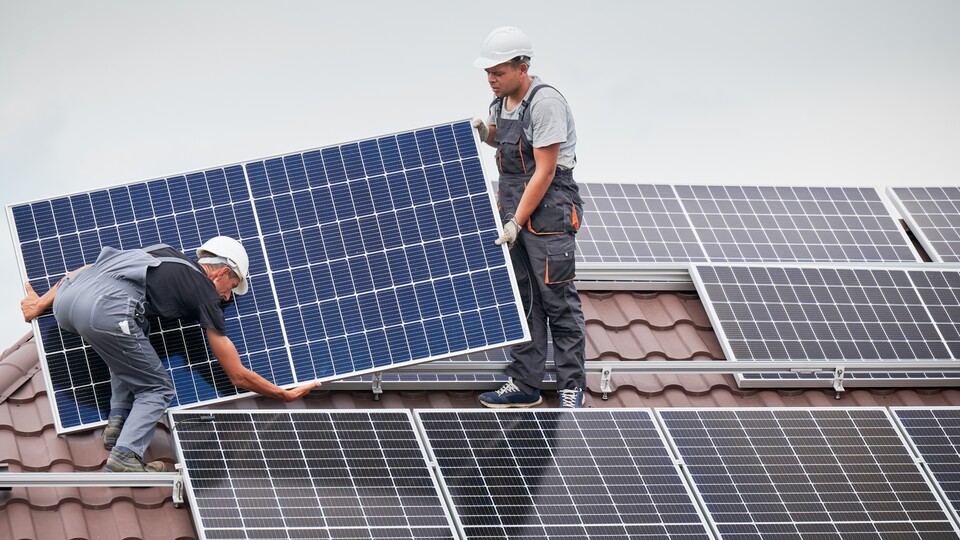
The energy transition in California is currently happening so quickly that millions of kilowatt hours of solar power are lost every year. (Symbol image: stock.adobe.com – anatoliy_gleb)
Advertisement
We have reported several times in the past about exciting and strange energy topics, such as a fence made of solar panels that a German built around his garden. The advantage: The fence pays for itself within four years.
In this article, however, we look at a strange story from the USA, more specifically about too many solar panels in California.
Why this is interesting: California is currently producing so much solar power that the grid operators can no longer keep up with grid expansion and are barely paying. But how could it come to this?
- The Huffpost reported that social support projects save low-income families from the installation, which usually costs $10,000.
- A total of 47 gigawatts of solar energy have been installed in recent years.
- The systems theoretically provide enough electricity for 13.9 million households, but now solar power prices are in free fall.
For comparison: To get an idea of how much green electricity these panels generate, here are a few examples:
Advertisement
- A coal-fired power plant in Germany achieves energy production between 100 megawatts and one gigawatt.
- Nuclear power plants can be loud NDR produce about 1.4 gigawatts.
In detail: Reported on April 22, 2024 The Washington Post in detail about the current situation in California. According to the newspaper, the mass of solar roofs creates a problem for the grid operator.
Previously, network operators paid households a flat rate of up to $0.30 per kilowatt hour. So much electricity is currently being fed into the grid that electricity prices are slipping into the negative at midday, even though solar power only partially covers the daily demand.
- The sun provides a lot of electricity at midday that is not used
- The power grid is not sufficiently developed in parts
- This electricity cannot currently be stored in the available quantity
- Taken together, all of this reduces the electricity prices that grid operators pay to solar cell owners
Worth reading – If you are currently looking for a possible PV system: We keep reporting on so-called balcony power plants. Our editor Dennis Ziesecke spent a year testing whether they were really worth it.
Too much of a good thing can also be seen in the following video from extra3. This is about a solar park in Bavaria that is regularly taken off the grid at peak times.
Link to YouTube content
Too much solar power causes prices to fall
Paradoxically, California is moving too quickly in expanding renewable energies, which is why prices are now being put on the brakes. Payments are now made on demand and the price is therefore in free fall at peak times.
The problem: To harness all solar energy, the state would need larger energy storage and better wiring, which obviously doesn't exist yet.
Huge battery systems are currently being built, as you can see in this clip from Focus Online. The system looks like huge Lego bricks strung together and is supposed to be able to store 680 megawatts of electricity:
Link to YouTube content
California is currently selling some of its electricity to surrounding states and is increasingly planning to expand its network and add new storage facilities. In 2022 alone, around 2.4 million megawatt hours of electricity were lost there.
This is why storage systems are important for solar power
Most electricity is used in the morning and evening. In the morning, because people shower with warm water before work and use a hairdryer and coffee machine, for example.
During working hours, little to no electricity is used by households during the day, which is why there can be a massive surplus during peak solar production times.
Only in the afternoon or evening, when a large proportion of the population returns home from work, is the electricity used again for activities such as cooking or washing laundry and electricity usage increases again.
What alternative storage options are there?
There are several ways to store excess solar power. Large battery storage systems often cost a lot of money, which is why pumped storage power plants, Power-To-X technologies and heat pumps are often used as alternatives.
- Pumped storage power plants use excess electricity to pump water into a higher storage basin. When needed, the water flows back through a turbine and generates electricity at peak times.
- Power-To-X technologies use electricity to produce, for example, hydrogen or synthetic fuels. They can then be converted back into electricity.
- In the household, a heat pump can be used to heat hot water storage tanks at midday and thus supply the household with hot water in the evening and morning.
What solution (or what combination of different solutions) will ultimately provide relief in California if it comes to that remains to be seen.